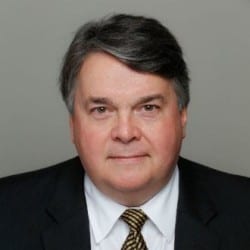Expertise from the Schulich School of Business will help inform the federal government’s recovery plan for Canadian exporters following the COVID-19 global pandemic.

Douglas Kennedy, director of Schulich’s Centre for Global Enterprise, took part in a panel of witnesses that presented key information to the government’s Standing Committee on International Trade (CIIT) in December 2020. The CIIT has commissioned a study to review the changes that will be made to the way international trade will be conducted in a post-COVID-19 world.
Kennedy is the inaugural managing director of the non-profit centre, whose mission is to assist Canadian companies in achieving their full potential through engagement with international markets. During the panel presentation, Kennedy emphasized that although all countries will be affected, the impact of COVID-19 will differ from country to country. Many East Asian countries that appear to be coping well can expect to recover and resume accelerated economic growth relatively quickly, he offered as an example.
He also noted that Canada constitutes under two per cent of the global economy, and that demographics, improving infrastructure, higher educational levels and similar factors imply many economies can be expected to grow at a faster pace than mature economies like Canada’s.
Kennedy also summarized that:
- Canadian businesses wishing to reach global scale will have to engage with markets outside of North America. Of the expected largest 20 economies in 2050, Canada’s trade with 14 of them is negligible.
- The pandemic will cause substantial economic disruption by accelerating trends already in evidence (e-commerce, remote working) while underlining additional risks businesses must manage (supply chain resilience, cyber vulnerabilities).
- Economic transformation influenced by COVID-19 will provide opportunities for Canadian businesses such as online delivery of services such as education, healthcare, engineering, and finance, as well as in the food and beverage industry.
- In an increasingly digitized economy, establishing multilateral consensus on issues like data protection and privacy, taxation and regulation of technology platforms, or common standards for technology infrastructure may hold even more value to Canadian businesses than simply reducing tariff barriers.
- In terms of support, many Canadian businesses will have to transform their business models and revise their value chains. Government programs could usefully focus on helping businesses make the necessary adjustments to facilitate such transformation.
- Government initiatives in support of trade should be prioritized by their ability to generate long-term returns to the Canadian economy. Programs need to be assessed and delivered based on the opportunity cost they pose for participating businesses. The less investment, time, effort, executive attention, or execution effort they require, the more enthusiastic businesses will be about participating.
To learn more about the Centre for Global Enterprise, visit https://schulich.yorku.ca/centre-for-global-enterprise.












 Welcome to the January 2021 issue of ‘Innovatus,’ a special issue of YFile that is devoted to teaching and learning innovation at York University.
Welcome to the January 2021 issue of ‘Innovatus,’ a special issue of YFile that is devoted to teaching and learning innovation at York University.







![An example Burlese [insect] funnel set-up in a student’s garage. Photo credit: M. Jurj](https://yfile.news.yorku.ca/files/2021/01/Glendon_FieldBiology_BugFunnel-225x300.jpg)


